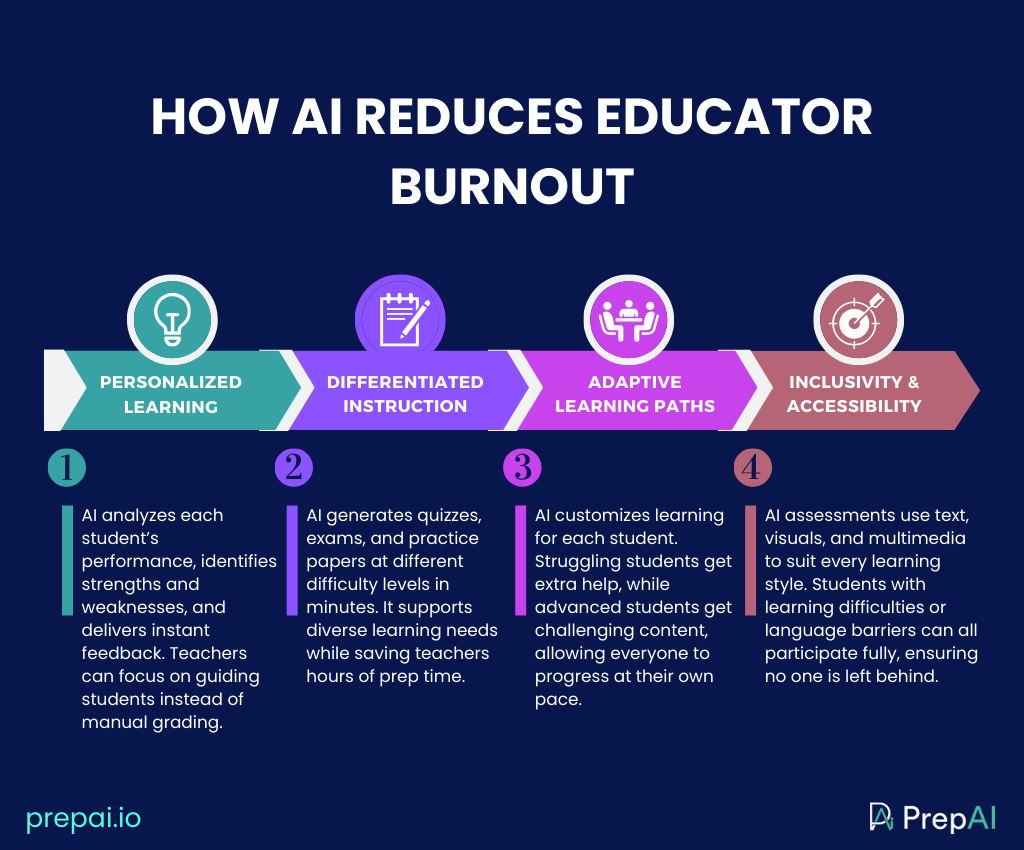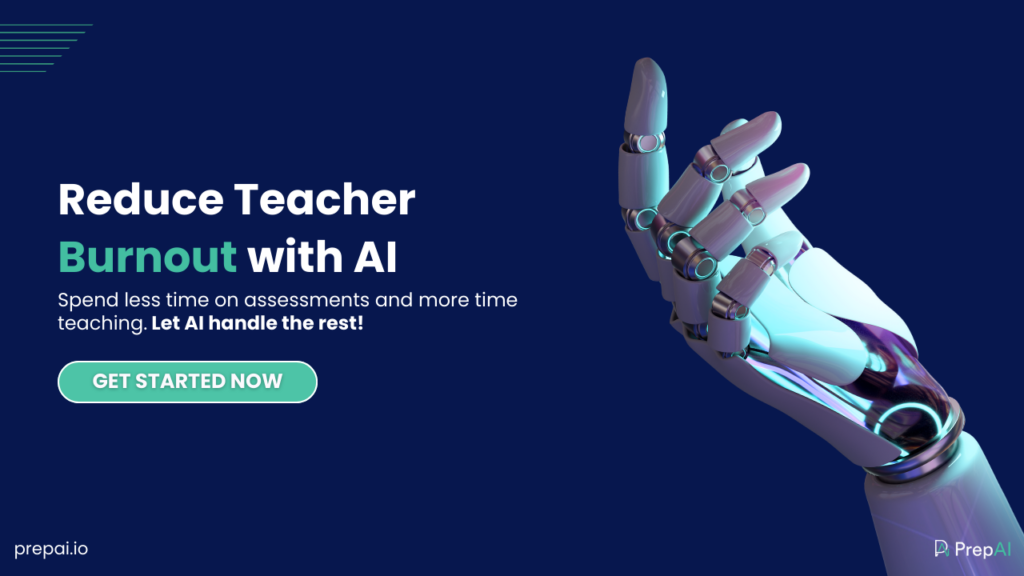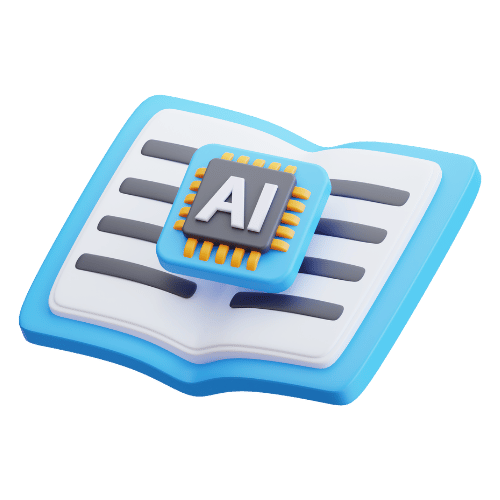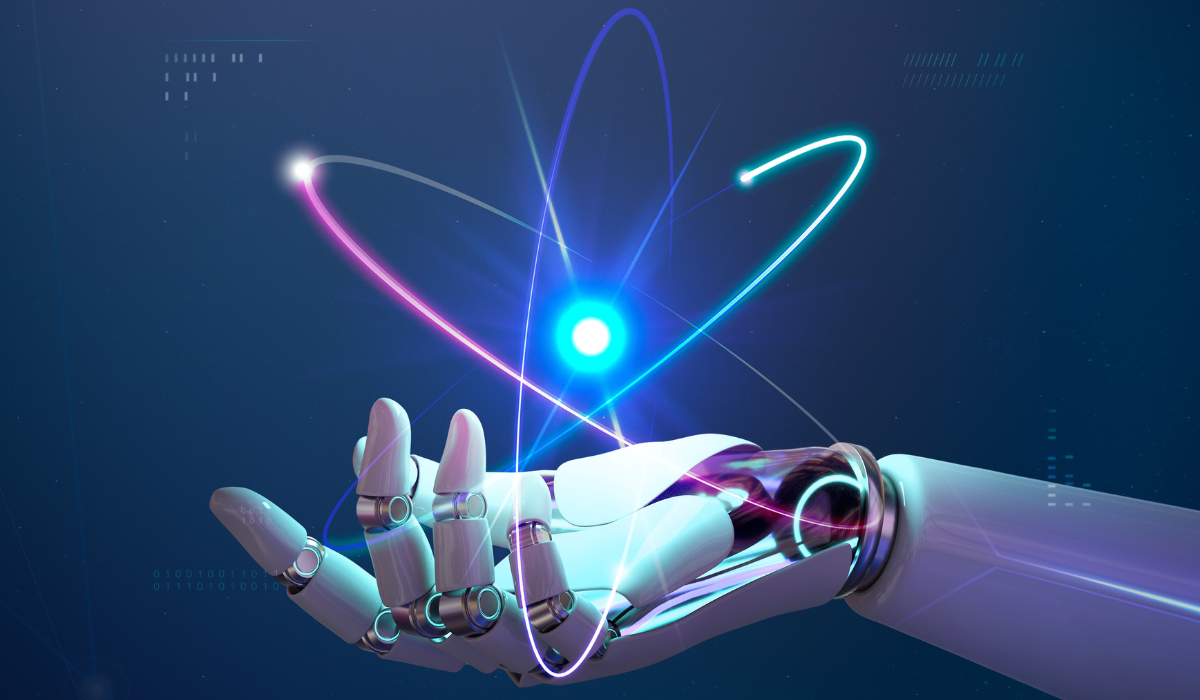The burnout gap for educators relates to the increasing discrepancy between the expectations of teachers and the time or resources available to complete the tasks expected. Many teachers are thinking about or experiencing burnout, and it can take different forms, including mental fatigue, emotional exhaustion, and physical exhaustion. Let’s understand how AI reduces the burnout of educators.
Teachers play a vital function in the realm of education. They are dedicated professionals who foster growth, develop competence, and exchange knowledge. But their zeal and commitment to the rising demands of 21st-century classrooms may lead to burnout. Teachers are supposed to set an example of resilience, empathy, and emotional regulation. However, many teachers are at a breaking point due to increased workloads, personnel shortages, and increased student requirements.
Over 55% of teachers say they are thinking about quitting their jobs because of stress and burnout, according to the National Education Association (NEA). Obviously, if educators disregard their own well-being, we cannot expect them to promote SEL (Social-Emotional Learning). There is a growing realization that artificial intelligence in education may assist in decreasing teacher burnout by reducing administrative duties, delivering real-time support, and creating breathing room for what counts most: making connections. While the focus has been on the impact that AI has on students, there is also a growing recognition that AI can help alleviate such fatigue.
One solution to reduce the burnout of educators is to integrate AI tools like PrepAI into the educational system. The biggest contributor to the teachers’ burnout is assessment generation that includes designing, conducting, and grading tests. Using AI tools can develop assessments within just minutes. You don’t have to worry about the curriculum either, because these tools are curriculum aligned so that all questions generated are in synchrony with national and regional standards. This allows teachers to redirect their energy to what they are most adept at, which is teaching and interacting with their students, while consistently delivering high-quality, standardized assessments that lead to improved learning outcomes.

How Does AI Reduce Educator Burnout?
The requirements placed on today’s educators are vast and characterized by an evolving societal landscape that reflects the changing nature of needs. Therefore, it is imperative that AI be used to manage the increasing expectations that often generate burnout. In education, AI has fundamentally changed the nature of teaching through changing how educators perform their functions across arenas like:
Personalized Learning
Teachers are responsible for tailoring instruction according to the different needs and learning styles of students, thus offering tailored learning experiences. AI tools like PrepAI analyze students’ performance, identify their strengths and weaknesses, deliver instant feedback, and provide tailored resources to suit the needs of the individuals. AI helps in automating tasks like grading and offering data-driven insights to educators. This process fosters an inclusive environment, which is effective and accessible to all students.
These AI tools can automatically adjust the difficulty levels of the assessments (easy, medium, and hard). Educators can even make assessments automatically using different formats (MCQ, quizzes, subjective, short-answer, HOTS, and more). In classrooms with high student-teacher ratios, common in Africa and Asia, this ensures that the progress of every student is measured in an equitable way without unduly overwhelming teachers and makes students learn according to their pace.
Differentiated Tiered Instruction
Educators must differentiate instruction in order to meet the different readiness levels of students. AI in education allows teachers to create assessments on different levels of complexity and support learning for all students. Educators must provide experiences that build skills, including critical thinking, problem solving, creativity, communication, and collaboration, for students to successfully meet the challenges of the world today. AI assessments can create assessments like functional assessments, technical assessments, and more. AI can help develop these skills, as it can provide immediate and sometimes more elaborated feedback and answers for students to continue learning.
Educators can instantly generate quizzes, exams, and practice papers from lesson notes and textbooks or upload content using text, audio, video, and more. What used to take hours or even days now takes only minutes, allowing educators to dedicate more time to lesson planning and student engagement. It helps students by enhancing the individual needs of the students of Ghana, Africa, where educational resources were limited.
Adaptive Learning Paths
Beyond creating just questions, AI tools for teachers, such as PrepAI, can assess how students have performed and offer customization. For example, if a student is struggling with fractions in math, this AI tool might provide more practice problems, run step-by-step tutorials, or offer remedial quizzes to provide further explanation. Moreover, the students who are doing well could be offered advanced questions to keep them engaged and motivated.
This technique allows each learner to work at their own pace, based on their ability, rather than with poorly motivated learners while “smarter” learners stagnate in a one-size-fits-all approach. For educators, this approach means less time differentiating instruction manually and more time focused on mentorship, creativity, and working with their class. With time, adaptive learning pathways close gaps where understanding is poor, result in higher-level performance in the classroom, and contribute to a significant reduction in the burnout associated with trying to manage multiple learning levels in large classrooms.
Inclusivity and Accessibility
AI tools’ ability is not just limited to text; many forms of AI powered assessments can be made with AI tools like PrepAI. This allows all students access to the assessment based on their individual learning preferences. For example, using visual-based questions can help learners understand a concept better via diagrams or images, while simple text options can assist students who struggle to read. This means students who face learning difficulties or may face language barriers can all be in a position to demonstrate understanding and not feel excluded from the assessment process.
This flexibility also benefits students with learning difficulties or language barriers, ensuring that no learner is excluded from the evaluation process. By offering assessments that are adaptable and inclusive, AI creates a level playing field in the classroom, empowering every student to demonstrate their understanding in ways that suit their strengths.
AI Impact on Teachers
The benefits of AI assessments for educators help in increasing teaching time for teachers; and reducing the burnout that makes them feel exhausted. The AI tools allow teachers to:
- Spend more time on interactive lessons and engaging with students.
- Spend more time mentoring and being creative versus doing paperwork.
- Improve work-life balance, decreasing stress, and improving retention.
In fact, early AI adopters in classrooms are experiencing decreased stress around workload and improved fulfillment with their teaching.

Conclusion
AI will not replace instructors; it will empower instructors. AI will take away the repetitive parts of the instructor’s job, which creates space to bring more energy, focus, and creativity to the classroom. The use of AI tools is no longer just for assessment creation, it can be used in a variety of ways like administrative tasks, fulfil educational purposes, and help in maintaining the integrity of the institution. As the tools continue to be adopted, AI tools such as PrepAI will be important to reducing burnout and improving retention rates, ultimately leading to improving learning outcomes for students.



